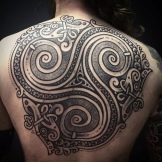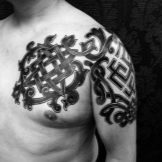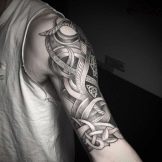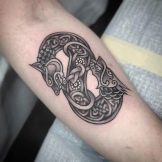Overview of Celtic Pattern tattoos and their placement

According to legend, the Celts were brave, physically strong and tough people. They are known for their adherence to principles and non-trivial thinking. And the patterns with which their warriors adorned their bodies have gained great fame today.
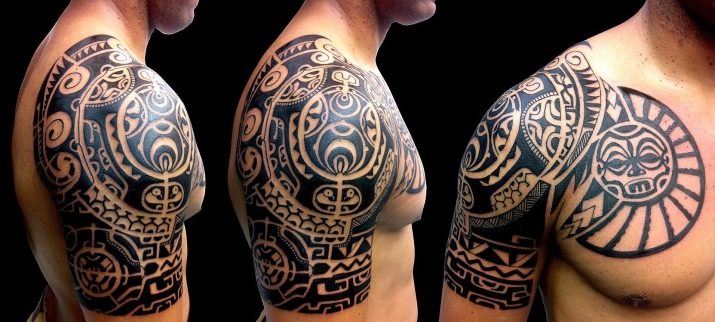
Peculiarities
Throughout the history of mankind, people wanted to stand out from the crowd, tattoos were one of the means of self-expression. The history of body painting goes back to the 7th century BC. Celtic symbolism occupies one of the leading places in the art of tattoo.
The life of the Celts in ancient times was inextricably linked with belief in higher powers and spirits.... This people believed that if you paint the body with pictures with a sacred meaning, you can achieve endless life and subsequent rebirth of the soul. A warrior with such tattoos was recognized as invincible and unattainable for the enemy.
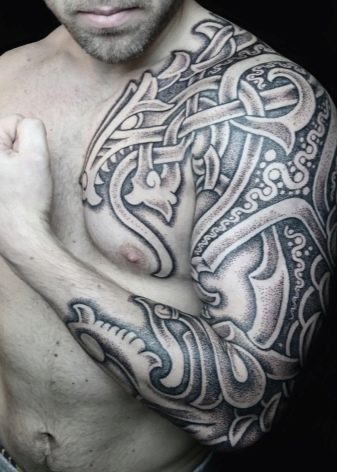

The Celts applied their patterns not only to the skin - they decorated tools, clothes, household items with them, and even painted temples. People of that era were famous for their aggression and brutality in battle. By their actions against opponents, they often resembled wild animals that accidentally found themselves in human guise.
The Celts conquered many peoples with a variety of religions - this could not but have an impact on their culture. In modern Celtic ornaments, one can notice Slavic, Byzantine, and also Indo-Aryan motives. Celtic tattoo designs combine Arabic script, Byzantine designs and a Christian cross.
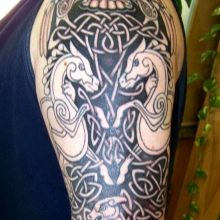
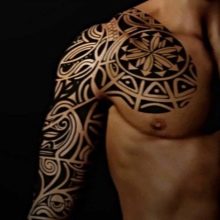
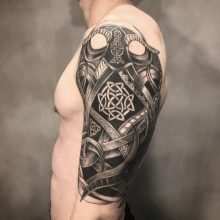
If you take a closer look at such a drawing, you will notice that the signs on the body do not have their beginning and end - thus the Celts associated them with the infinity of the life of the human soul.
Visually, Celtic tattoos resemble an intricate ornament, as if flowing over the skin. In previous years, they were performed only in black and white. Nowadays, they are made full-color, thanks to which they have become even more colorful, rich and original.
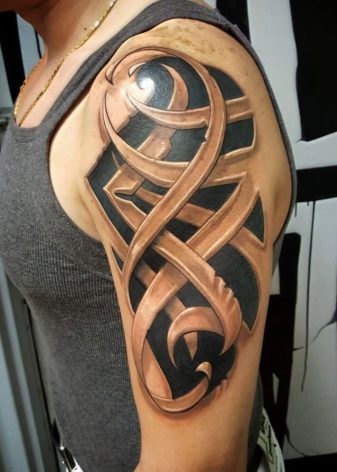

Celtic designs on the body were stuffed by the most powerful and authoritative representatives of the male sex. Such people in any situation could protect themselves and defend the interests of their loved ones. Nowadays, these original ornaments are far from being the lot of men; there are examples of tattoos for women. Tattoos express the strength of a person's spirit, and what gender, skin color and nationality he is - does not matter.


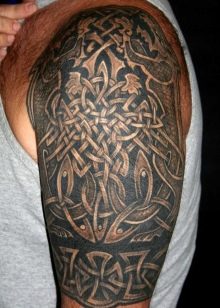
Variety of tattoos and sketches
The symbolism of Celtic tattoos is interpreted taking into account beliefs and mythology. Let's dwell on the most common motives.
Celtic shamrock. This is a sign of the most ancient peoples of Europe - the Scandinavians, Celts, as well as the ancestors of modern Scots. In their cults, the image of a three-leaf clover was widely used. This tattoo represents a triad. By tradition, such tattoos are made by immigrants from Ireland or people who admire this country. It is believed that this image brings success and good luck in any endeavors.
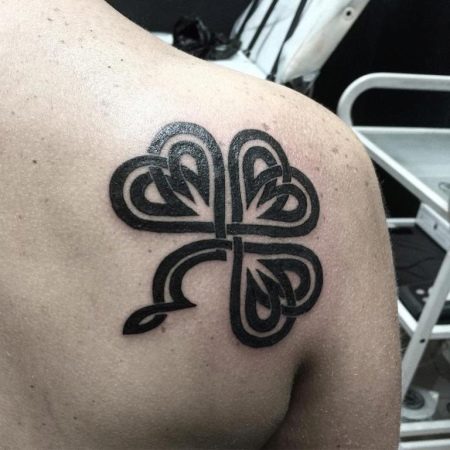
Celtic patterns. They are a sign of strength, perfection, unity with higher entities. The Celts sincerely believed that such ornaments were sent to people by the supreme gods. The patterns consist of many nodes, each of them is associated with a guiding thread, a person's life path. And its weaves and curls indicate the difficulties and obstacles that the owner of the tattoo has to overcome.
This plot is inextricably linked with spiritual rebirth and personal self-improvement.

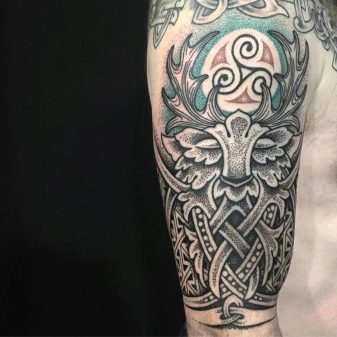
A special role in the symbolism of the ancient Celts was played by image of a labyrinth. He personified the path of man to the concentration of power, personal growth and knowledge of the essence of being. A popular motif in body art is the image of a crown with a heart held by a pair of intertwined hands. Such symbolism means a warm relationship between two lovers, devotion and vows of fidelity to feelings. Usually pricked on the arm like a bracelet.
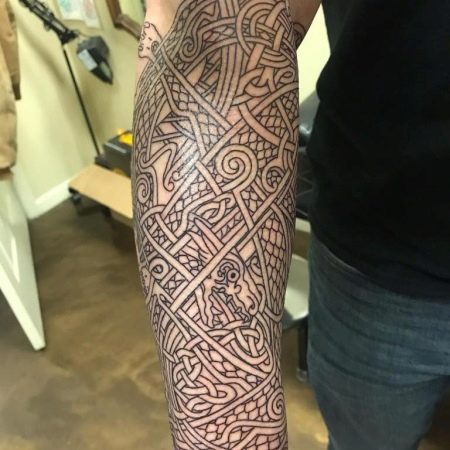
Celtic cross. In its outlines, this figure resembles a Christian crucifixion, but the Celts placed it in a circle, symbolizing the forces of the elements. Such a symbol means eternal life, rebirth and unity of man with the Universe. It is believed that the Celtic cross came from Christianity, therefore, such a tattoo is usually done by deeply religious people or those who want to protect themselves from evil forces. Another interpretation of this sign involves the memory of departed people.
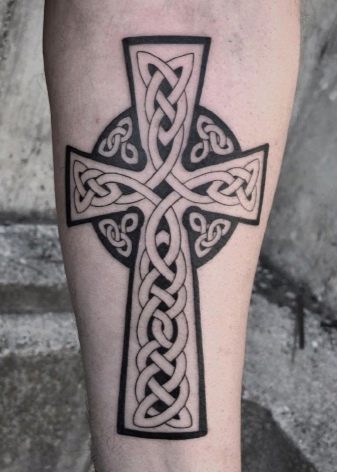

Celtic inscriptions. Runes can be found in Celtic mythology; they are encrypted messages. This writing existed from the 1st to the 12th centuries, this type of outline is distinguished by an angular shape. Each rune has its own sacred meaning, and together they strengthen the semantic message of the composition.
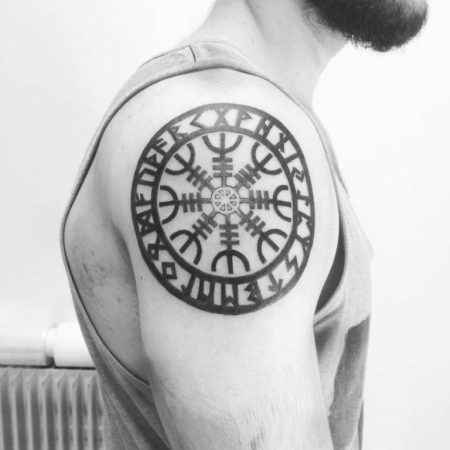
Celtic weave... The ornament is associated with the unity of the human spirit and the earth. This motif can be located inside the picture or outside, outlining it with its curls. Usually applied to the hand.
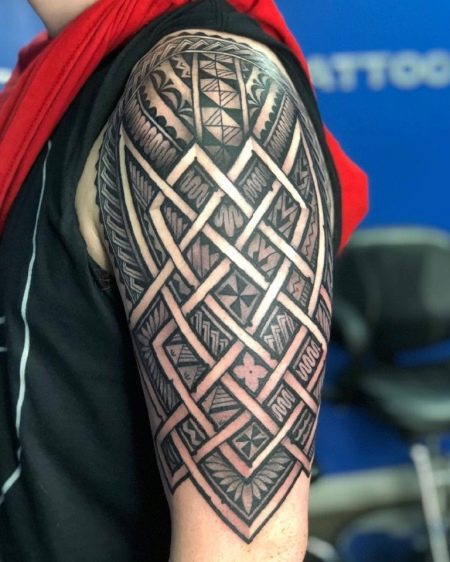
Medallion... The image of a medallion among the Celts was equated with a talisman. It was believed that he bestows security in life, endows a person with good friends and gives him eternal love.
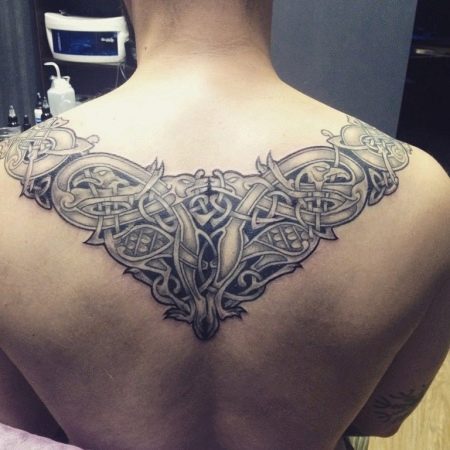
Spiral... This figure, according to the interpretation, has a powerful force. It allows a person to go from small to large, contributes to the improvement of the spirit.

The tree of life. The tree of life is considered a sign of the knowledge of good and evil. This symbol of the Celts is endowed with magical properties - the Celts believed that it allows a person to find new friends and expand his circle of communication. The energy of this sign is inextricably linked with eternal life, universal reason and knowledge.
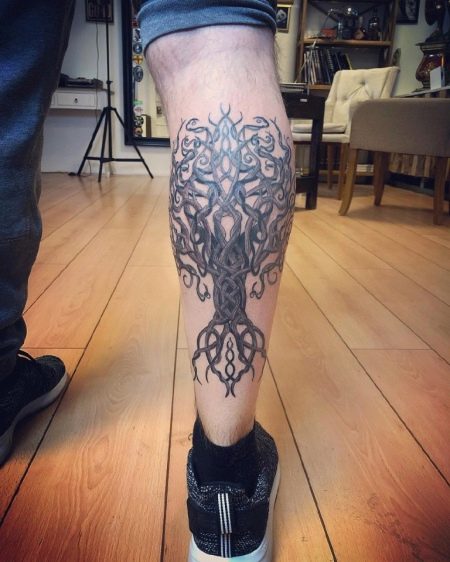
Animals... Celtic warriors with their tattoos tried in every possible way to emphasize physical strength and superiority. To do this, they stuffed images of wild animals on the body - a boar, a predatory wolf or even a mythical dragon.
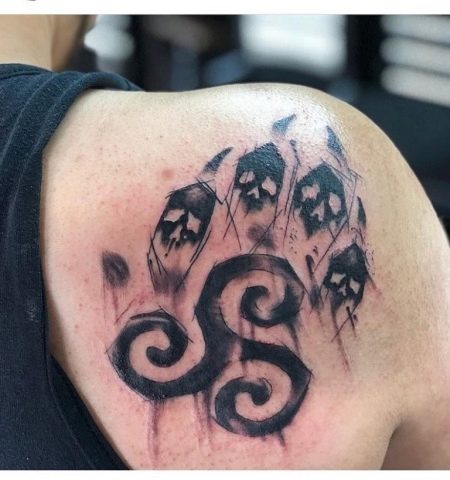
The Celts believed that the animal world is inextricably linked with human destinies. They believed that animals by nature itself are endowed with knowledge that they can convey to humans. And in order to gain wisdom, the Celts applied images of animals to the body, each endowed with its own symbolism:
- dog - success and luck;
- bull - physical and mental strength;
- boar - aggression and cruelty;
- horse - beauty;
- fish - the happiness of being;
- raven - death;
- the wolf is a sign of leadership.
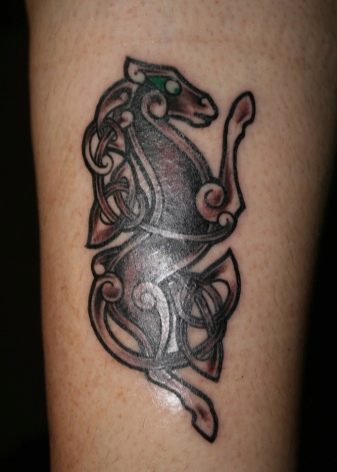
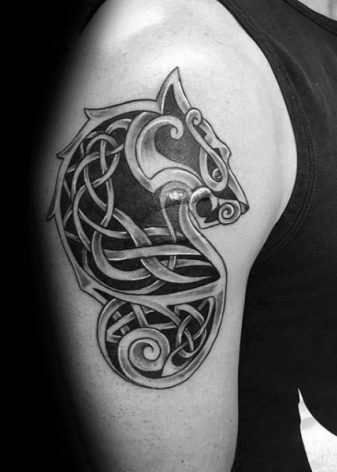
Where can you place it?
A person can place a tattoo on any area of his body. However, the Celtic decor is traditionally stuffed in open places - most often it is the forearm, shoulder, as well as the area of the wrist and legs. Ornaments and patterns are usually pierced in the forearm area, the tree of life looks spectacular on the back from the waist to the shoulders, and a cross is depicted on the shoulder. The bracelet looks best around the wrist, with a trefoil stuffed on the wrist and ankle. On the neck of men, images of skulls entwined with intricate ornaments are impaled.
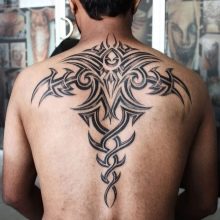
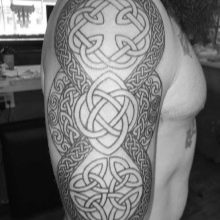
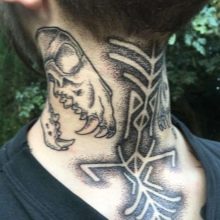
A sleeve filled with Celtic patterns and their symbols looks very impressive.
Girls who decide on a Celtic-style tattoo need to think about what such a tattoo will be in the future. Over time, the body changes its shape, the skin fades and becomes scarred. Drawings drawn in these places will look stretched, "floated" and will lose their contours. Therefore, for the fairer sex, it is best to stuff a tattoo on the thigh, calves, just below the elbow or on the ankles - these places on the female body are least affected by time. But drawings on the chest and stomach are best avoided if you do not want to cause ridicule in adulthood.
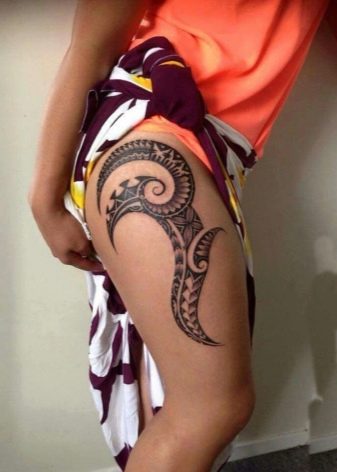
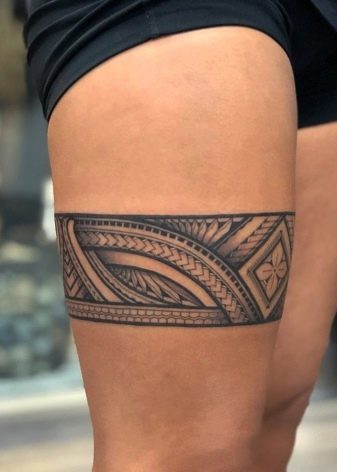
Having touched the Celtic culture, one can understand how original, mysterious and mysterious this people was with unusual beliefs and rituals. The life of these people was inextricably linked with physical rituals, magic and mysticism. It is this halo of mystery that made the Celtic theme so popular in modern tattoo art.
